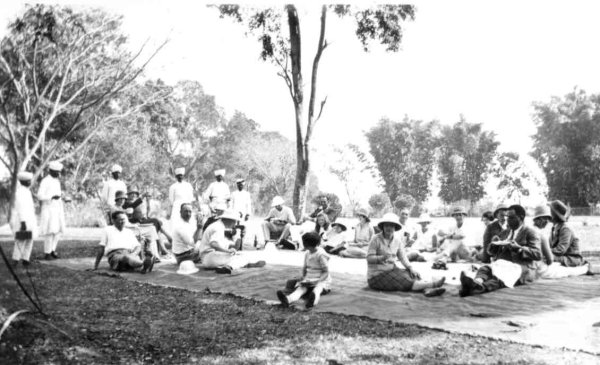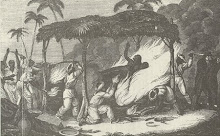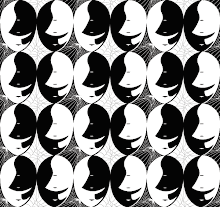Colonialism for Dummies: What It's All About
This semester I have been in a course entitled "The Empire Writes Back to the Center". We've studied the literary works of many great authors in hopes of understanding the postcolonial mindset and how it helps us to know what effects colonialism had on the world. As a way of synthesizing this information I'll be connecting the course concepts in ways that hopefully make sense and can shed some light on colonialism in our world in the past and present.
How To Use This Site
What follows is a short description of colonialism and discussion of some of the major elements of the colonial period and beyond. There are videos and articles that may shed a different or updated perspective on colonialism as well. This site is intended to be used to simply gain a better understanding of colonialism, not be the end all source for colonial knowledge! Please enjoy the commentary and feel free to add your own thoughts.
Subscribe to:
Posts (Atom)
Internal Colonization... Just the Beginning

European colonization started a long time ago, and America was just one of the first areas to be colonized. However, English colonialism in America was markedly different than later forms.
Internal Colonialism: America
When England colonized America, creating the thirteen colonies, the intent was to establish a colony that practiced responsible self-government. Those entrusted with the power were in fact British citizens, although many had left Britain because of religious persecution or in search of wealth and land. Therefore, when America asserted its’ independence and broke free from England not only was this somewhat more expected because the thirteen colonies had a strong, well functioning government structure already established; but they had also originally been set up with the intention of being semi-autonomous. Similar freedoms were granted in other British colonies, namely Scotland and Ireland (perhaps Ireland to a lesser degree due to religious reasons), but overall these colonies were afforded representation in Parliament and the ability to self-rule so long as they remained loyal to the King. Obviously, it is not hard to realize that all of these colonies were led by white Europeans, and therefore were afforded these privileges. However, when America revolted and declared its’ independence and Ireland rebelled England recognized responsible self rule would not even work in areas populated by Europeans, and therefore would certainly be fully ineffective in any other areas of the world. Due in large part to the actions of America and other early British settlements later colonial expeditions changed their methodology resorting to a more robust and overarching control.
The Age of Reason

The liberal tradition created by the Enlightenment in Europe justified the civilizing mission, or so they thought. But what happened to the values of equality, self-determination and freedom in the colonial world? Citizen became subject.
The Enlightenment
The enlightenment in Europe brought about many changes, including widespread belief in equality, democracy, science, rationalism, and liberalism among other things. While these values were held to be of the utmost importance for Europeans, they did not extend to non-Europeans. As such, the colonial mission flourished under a nonsensical mindset, where inalienable values in Europe were only the dreams of the natives in newly colonized regions. In fact, the enlightenment and subsequent scientific revolution actually served to justify colonialism through a twisted version of science. By “proving” that indigenous peoples were not as advanced as Europeans because they were not as far along in the evolution process, scientists were able to show supposedly concrete evidence that natives needed Europeans to help them behave like civilized peoples. Herein lays the justification for the civilizing mission.
In the Heart of Darkness

Captain Kurtz couldn't handle the strange universe of the colonial world. As the journey into the heart becomes a journey into one's soul he realizes that in his soul there is a darkness that is brought out by the so-called civilizing mission
Into the Heart of Darkness
Few works of literature show the effects of the civilizing mission quite like Joseph Conrad’s Heart of Darkness. In the book he depicts the effects on European and indigenous person alike, illustrating the slow destruction of both that is inevitable when the truth about colonialism is recognized. In the age old tale a European ventures into the heart of Africa, content believing that his mission is that of a bearer of civilization. He soon realizes that instead of “civilizing” the Africans his mission is to use and abuse them for anything they can do, focusing on reaping as much wealth out of the people, land and natural resources as possible. Instead of bringing culture, Kurtz realizes that Europeans are in fact destroying it and their own humanity. Heart of Darkness makes these concepts clear through the narrative of a man viewing Kurtz’s situation after Kurtz has lost his own humanity. Through this outsiders narrative we witness how insane Kurtz has become, an inevitable result of the heart of darkness.
Frantz Fanon

The Colonial Manichean
It quickly became clear that the civilizing mission could only go so far. Therefore, what was only later termed by Frantz Fanon the “colonial Manichean” found its beginning. The colonial Manichean was a structure that governed life in the colonies and defined every individual’s role. The Manichean was a dichotomy of society, the light and the dark; the good and the evil; the European and the native. In this system the two spheres were separate. There were certainly individuals who fit into both in some ways, and they were the bridges between the two. Of course at the time there was no term for it, no recognition that the dichotomy existed. Yet it did exist and permeated every aspect of life such that there were functionally two cultures in the colonies. As J.C. Heesterman notes in his chapter “Was There an Indian Reaction? Expansion in the Indian Perspective” the colonial Manichean was markedly different than previous systems. Prior to the British colonizing India the Moghul’s had established widespread influence networks and some control over India’s various Princes. However, the Moghul’s created influence networks to be inextricably part of Indian culture and day to day life; instead of separating themselves they linked their empire to the economy of India. Accordingly, the Moghul’s did not rule from a far away capital, but maintained control in India. The British did not want their culture to be integrated into Indian culture, and therefore prevented such a thing from occurring by establishing and cementing the Manichean culture.
The Mixer

Orientalism
What has been furthered discussed about the Manichean is the fact that everything regarding the lesser sphere, that of the Orient, was not only regarded as evil, dark, and less important, but was also essentialized. Edward Said is famous for defining this phenomenon and calling it Orientalism, a worldview that views everything from the Orient as basically the same. More specifically, Said claims that by lumping cultures, actions, behaviors etc. of those from the Orient together the trait of being Oriental becomes essentialized, in other words everyone from the Orient embodies the same characteristics. Declarative statements can be made about those from the Orient, as occurs in Forster’s A Passage to India, and it automatically applies to any and all who hail from there. Orientalism was and continues to be a way to view the other as a homogenous group that can be described by specific traits and therefore can be compartmentalized easily.
Sati in India

Overhaul of Culture
As colonialism progressed traditional values came under increasing scrutiny. An excellent example is the practice of Sati in India, or widow burning. This practice was regarded as barbaric by the British, and for many Indians was not a part of life. However, in some specific areas Sati was still practiced, and became an area where British interference with everyday Indian life can easily be understood. In an attempt to regulate the practice of Sati the British established laws based upon religious texts regarding Sati. The local government authorities consulted with religious scholars to determine what constituted legal and illegal Sati. Mani Lata and Ashis Nandy shed some light on this spectacle in Cultural Critique and At the Edge of Psychology, respectively. In trying to define Sati and categorize it the British were in fact attempting to regulate and define tradition and culture, and to make it worse those things of a completely different culture! The result of the imposition of a British type legal system upon traditions and cultural practices of Indians was a system that at times made little or no sense at all; and most likely confused and added to the cultures and traditions of a population.
Of Mimicry and Men
Of course, just being of the Orient and from the lesser sphere was not enough. In the colonial world the natives wanted to improve their position, as any human being is wont to do when they feel disadvantaged. In colonial society the only way to work up the social rank was to embrace the new European culture. This inevitably led to mimicry, the natives mirroring actions held to be acceptable by the Europeans in power. Dress, language, and conversation topics were all areas where natives could be “white”, but as Homi Bhabha reminds us in The Location of Culture, natives were sentenced to a life of “white but not quite”, where the best they could do was to be very similar to the Europeans, but never exactly the same. Forster’s novel again provides excellent examples of the endless pursuit of European-ness, which ends up getting Dr. Aziz into big trouble and eventually alienates everyone. The charade of natives attempting to be European becomes exhausting for all involved and each individual seems to inevitably slowly reject mimicry, at least in A Passage to India. However, in reality mimicry was real and prevalent, leading to the creation of a deeper connection between European and native culture.
Tayib Salih

The New Culture
The two worlds became one in later generations of colonized peoples, as illustrated in Tayeb Salih’s Season of Migration to the North. In the book Mustafa Sa’eed is the result of the blending. Born in Sudan, raised by Europeans in Cairo and educated in England Sa’eed is the complete picture of a person whose roots and background transcends the colonial Manichean system, yet are still stuck within it. Although Sa’eed manages to acquire high levels of education, academic success and earn the respect of colleagues in his field of study he ultimately cannot break free of his foundations. To people he meets in England he is an African, a native, from the South and of the jungle. The fact that he is so learned and well spoken only adds to his exotic appeal. Sa’eed is what is now called a hybrid, someone who represents both the colonial and native culture. Sa’eed goes mad under the pressure of the two worlds, loses his mind to the fantasy of both and therefore the lie of both, because it can be difficult for one person to fit into two distinctly and purposefully different worlds. Mustafa Sa’eed’s experience as a hybrid was not unique to just himself. When blending the two worlds, nonsense was a common result.
Marabar Caves

Nonsense
After all of the effort put forth by the colonizers to create a world in which two spheres existed concurrently, the one always gazing up to the other, the result is chaos and nonsense. In a mad effort to maintain the world of the Manichean colonial nonsense results as witnessed in Kurtz’s murmur “the horror, horror!” and Adela’s echo from the Marabar Caves “boom boom.” In the colonial world both the colonized and colonizer became lost because each was attempting to live in their own space, in vein. Instead of achieving success and remaining in the good or the evil, only crossing every so often, the two spheres could not stay apart and the mixing resulted in confusion. When trying to make sense out of this hodgepodge of human mingling in a gray world the lines of communication became entwined and logical thought was rendered useless.
The White Flag
The colonial project was quickly becoming a lost cause. Colonial nonsense, the entrenched dichotomy of good and evil, the hybrids were all way too much for Europeans to take. As a result, colonial surrender and nostalgia came into being. Europeans started pining for the “good days” when the natives were savages, their lack of knowledge and culture seeming quaint instead of appalling. The colonists gave up, so to speak, at this time and surrendered what was left of their hopes for colonialisms grand plan to spread civilization to the masses.
Gamal Abd al-Nasser

Nationalism
Colonial nostalgia and surrender became the reigning attitude of many Europeans working in the colonies, colliding with historical events to create an atmosphere where colonialism could leave the scene. With European education and having traveled to study in Europe many colonized subjects started to fight back and rebel against the colonial system. They justifiably wondered where all of the liberal values were in the colonies, those values so near and dear to Europeans for so long were completely absent in colonial territories. Nationalism in the colonial world emerged along the boundaries imposed upon Africa and Asia by Europe itself. With nationalism came the extreme rejection of hybrid culture and a reversion back to prior traditions and values.
It Only Goes So Far
Of course, the desire for a reversion back to the way things were before colonialism was impossible. Decades of European intervention had altered the fabric of society. While removing all vestiges of colonialism was a central focus of nationalist movements, in the end this became more an exercise is claiming a national language, establishing a government structure and heaving off the colonial yolk. All of these actions were not recalling what once was, but instead creating a new culture and society. In Nasser: Hero of the Arab Nation by Joel Gordon the experiences of Egypt in this process are shown through the presidency of Gamal Abd al-Nasser, more commonly referred to as simply Nasser. Nasser embraced the nationalist movement and attempted to protect it by making it extreme and by rejecting the development of democratic institutions. He embodied the movement and helped create the envisioned independent nation-state which help political power and sway internationally. That is what nationalism was all about. However, in the end, nationalism proved to be unsustainable, in Egypt and elsewhere. Nationalist movements could be made or destroyed by one person, each movement needing its own charismatic leader and the support of the people. When the leader was gone, the movements had trouble surviving the maelstrom of internal dissention and other external factors.
Black Faces White Masks

How It Works Today
The days of strong nationalism are long gone, but noting significant has filled the void. Those who were colonized and the colonizers themselves both theorize what the colonial mission really was, and how it affected the world and both groups of people. But theory does not make or break nations, and unfortunately many former colonies have been unable to create a niche for themselves in today’s world. While colonialism is, for many people, very much over, a different kind of control now exists. Some call it empire, others neo-colonialism, and still others imperialism. Ultimately, in this global world the crux of life is the economy, and therein lays the new form of colonialism. Replacing the nation-states of yesterday are multi-national and trans-national corporations, who stretch across the globe. They enter countries and streamline industries, production processes, and consumer desires. The multi-national corporation is the colonizer of the twenty-first century, and it remains to be seen what metamorphoses’ it will undergo in the next few decades of its existence as it attempts to grow the empire of capitalism and free markets.